Global brands are losing ground to gray market and parallel imports in international trade. Oliver Wyman reports that gray-market sales now account for roughly 13% of global consumer goods. In the IT sector alone, the gray market is worth up to $40 billion annually, hitting profitability with a $5 billion revenue loss for major OEMs.
However, tamper-evident solutions give brands a way to fight back. From serialized labels to smart geo-coded seals, these tools help reinforce distribution agreements and ensure compliance with regulatory requirements. But how? This article outlines 8 proven methods that can help brands prevent diverted goods from reaching unauthorized markets.
Why Brands Are Losing Control in Global Trade?
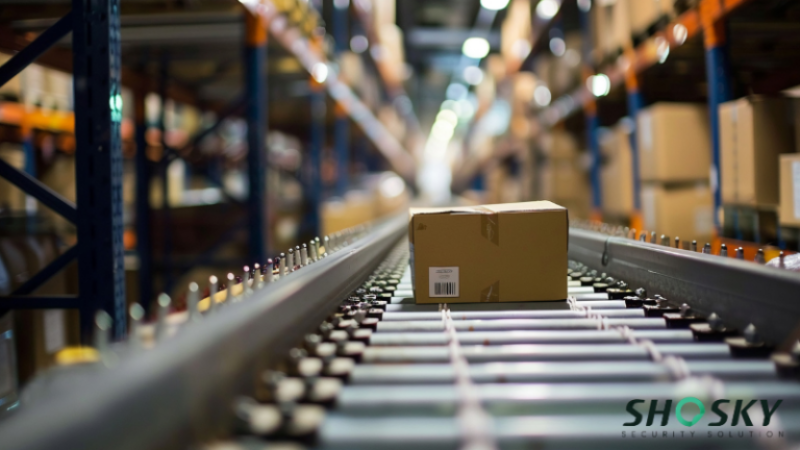
Before we get into the reasons why brands are losing control in global trade, you need to know that, unlike counterfeit products, gray market items are real, but their movement violates contracts and often sidesteps trade and compliance rules. Global trade has made it easier for products to reach new markets, but it’s also made it harder for brands to keep control.
The key reasons why brands are losing control include:
- Limited monitoring across regional distribution hubs
- Price differences exploited by unauthorized resellers
- Hard-to-trace repackaging that hides product diversion
- Growing online marketplaces that blur official channels
These challenges are hitting industries that rely on strict controls, like pharmaceuticals, electronics, luxury goods, and cosmetics. Without tamper-evident safeguards, it becomes easier for parallel imports to slip through, harming brand reputation and weakening global distribution agreements.
The Role of Tamper-Evident Solutions in Trade Compliance & Brand Protection
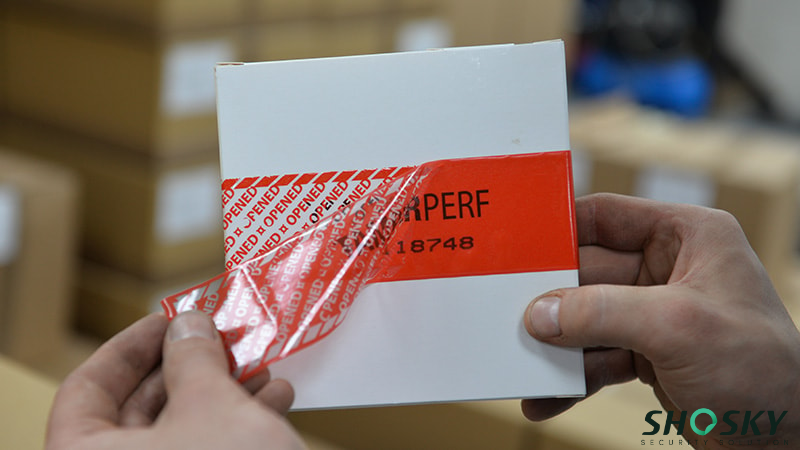
Tamper-evident solutions help brands confirm where a product came from, how it was handled, and if it stayed untouched along the way. Security seals, labels, and other tamper technologies solutions provide visible signs of interference, giving businesses a way to prove product integrity at every step of the supply chain.
These tools also support trade compliance by adding traceable identifiers. With the right setup, companies can link each unit to specific regions, distributors, or buyers. That helps flag unauthorized movement and gives enforcement teams the proof they need to act fast.
Tamper-evident measures also back up legal action. They strengthen cases tied to violations of MAP policies, ITAR controls, ISO standards, or regional agreements. When contracts are broken, these physical markers become evidence that can hold up in audits, disputes, or court.
8 Tamper-Evident Strategies to Stop Gray Market & Parallel Imports
The strategies below highlight eight ways companies are using tamper-evident technology to protect their distribution networks and stop gray market or parallel imports before they cause real damage:
1. Serialization and Unique Product ID Labels
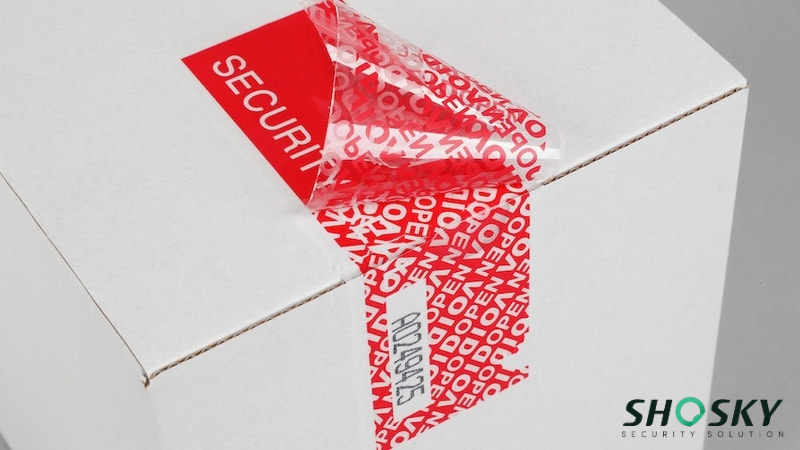
Serialization enables companies to assign unique identifiers to each product unit. This creates comprehensive tracking systems essential for ensuring compliance with distribution agreements. This approach prevents gray market activities by allowing precise monitoring throughout the supply chain.
The pharmaceutical industry has pioneered this method, with the Drug Supply Chain Security Act requiring serialization for prescription drugs to ensure product safety and prevent counterfeiting. The technology enables region-specific tracking and sourcing. This allows brand owners to monitor where genuine products are sold and identify violations of territorial distribution agreements.
When products appear in unauthorized channels, companies can quickly trace them back to their source, identifying specific distributors or regions where leakage occurs. This oversight is crucial for maintaining authorized channels and preventing products from entering markets where they may not meet local safety standards.
In a study by PwC, companies using serialization reported a 30% drop in diverted goods across high-risk markets (PwC, 2020). For brand owners, this means fewer financial losses, better control, and stronger legal standing. It also builds more trust with partners and customers by proving that the supply chain is secure.
2. Tamper-Evident Labels and Void Stickers
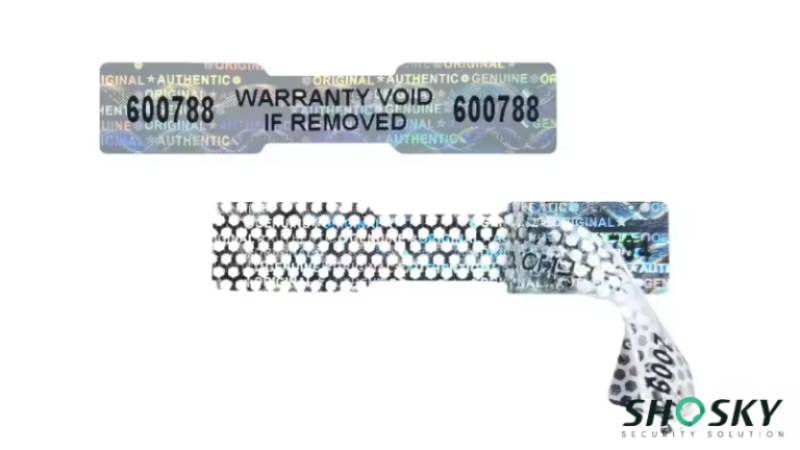
Tamper-evident labels and void stickers serve as the first line of defense against unauthorized product handling and gray market diversion. These security solutions are applied to packaging flaps, closures, or product surfaces, providing immediate visual evidence of tampering or unauthorized access.
The void security labels segment held the largest market share of 40.21% in 2024, demonstrating their widespread adoption across industries focused on consumer safety and brand protection. These labels show clear signs if tampered with, opened, or resealed, making them essential tools for maintaining product quality and consumer trust.
When removed or manipulated, void security labels leave behind distinctive patterns such as “VOID,” “DOTS,” or custom messages that cannot be replicated or hidden. This immediate visual feedback enables quick identification of compromised products at any point in the distribution chain, from manufacturing facilities to retail locations.
The implementation of void stickers provides concrete proof of breach at any logistics checkpoint, supporting due diligence efforts and legal enforcement against distribution agreement violations. Companies can use this evidence to demonstrate non-compliance by distributors or retailers, strengthening their position in legal proceedings.
3. Geo-Coded Security Seals for Regional Control
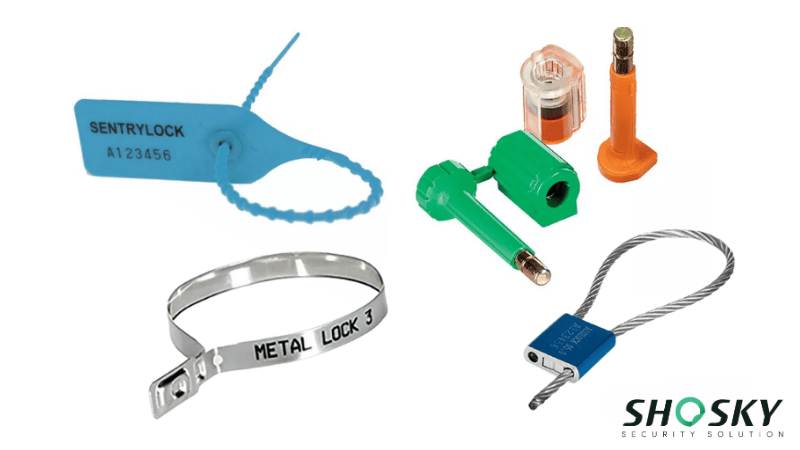
Geo-coded security seals give companies tighter control over regional distribution. They combine tamper-proof sealing with location-based ID systems. Each seal includes a QR code or barcode that ties to a specific area. This helps track seal usage and detect unauthorized sales by region or seller.
This system works well for companies active in markets with different rules or pricing. It tracks how goods move across borders and flags any suspicious routes. If a product sealed for one region shows up in another, the system catches it quickly.
That early warning helps companies step in before damage spreads. They can stop gray market activity, protect channel partners, and avoid regulatory trouble. It also helps keep agreements with local distributors intact.
Geo-coded seals support trade compliance by showing where a product came from and where it was meant to go. This is vital for exports, especially for dual-use items or those under trade restrictions. It also confirms products meet the right safety rules in each market, which protects both customers and your brand.
4. Tamper-Proof Tapes on Export Packaging
Tamper-proof security tapes with custom printing offer a reliable way to protect export packaging. These tapes are hard to remove cleanly, which stops people from resealing packages without leaving evidence. They’re designed to leave marks when peeled off. That makes it easy to detect tampering.
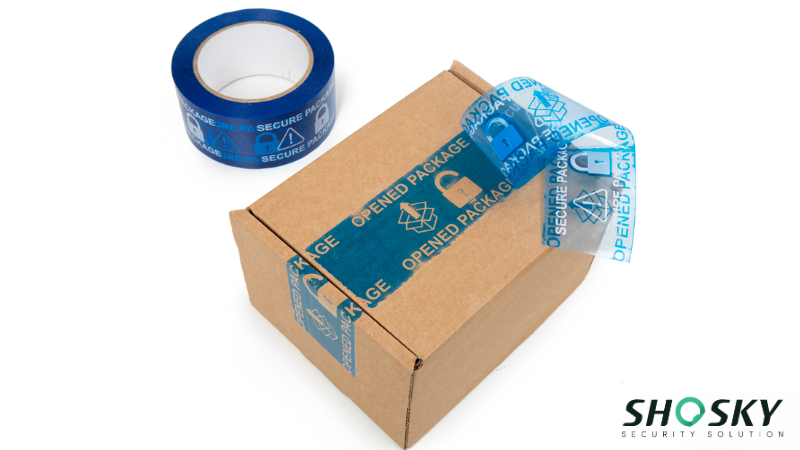
Custom printing adds another layer of control. Companies can include their logos, serial numbers, or QR codes. These details help with both tracking and the brand’s image protection. It also makes counterfeit packaging easier to spot and alert consumers.
This method works well for pallets, bulk shipments, and large cartons. These packages often move through many hands, so stronger protection is needed. The high-residue adhesive makes sure tampering can’t be hidden.
Tamper-proof tapes help companies meet global trade rules as well. They protect high-risk items like electronics, medicine, and luxury products. These goods often face theft or counterfeiting during transport. Using secure tape helps prove the shipment was handled properly.
5. Smart Labels with Authentication Tech
Smart labels with NFC (Near Field Communication), holograms, or mobile-scan features are now key tools for fighting gray market activity. These labels let buyers check if a product is genuine using a smartphone. That links consumers directly to brand owners.
The growing demand for such tech shows in the market size, valued at USD 34.6 billion in 2023 and projected to grow steadily through 2032.
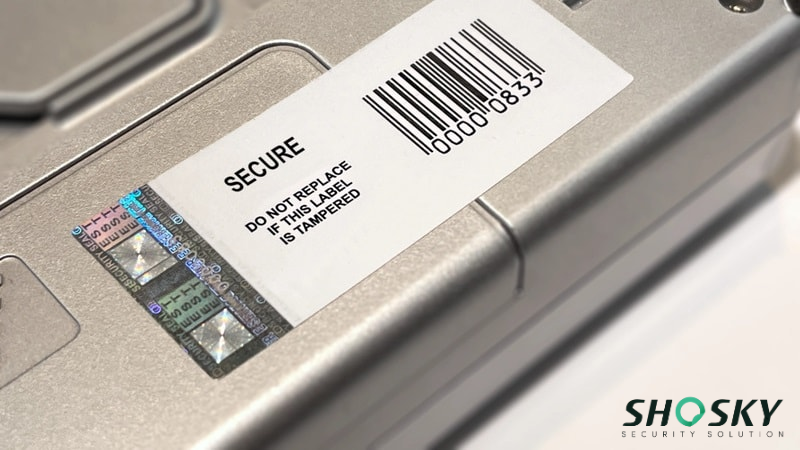
By using smart technology, brands can take export controls into their own hand, and can catch counterfeits and parallel imports right away. When scanned, these labels confirm both the product’s authenticity and whether it was sold through the right channel. That helps maintain buyer trust. It also protects brand reputation and offers insight into how products are being distributed.
These smart labels act like mini tracking systems. They collect and store authentication data that supports wider compliance efforts. This is vital in industries where safety and authenticity are non-negotiable. The system also helps brands learn more about how and where their goods are being sold.
Instant product checks help stop unsafe or fake items from reaching customers. They also reduce the risk of tampering or unauthorized reselling. For businesses, this means better control of distribution and a stronger grip on global sales channels.
6. Chain-of-Custody Documentation and Seal Logs
Comprehensive chain-of-custody records, along with detailed seal logs, help create a strong legal foundation against gray market violations. Each tamper-evident seal is tracked—when it was applied, where, and by whom. This creates a clear trail of accountability for your intellectual property. And these records are useful during legal action against unauthorized sellers.
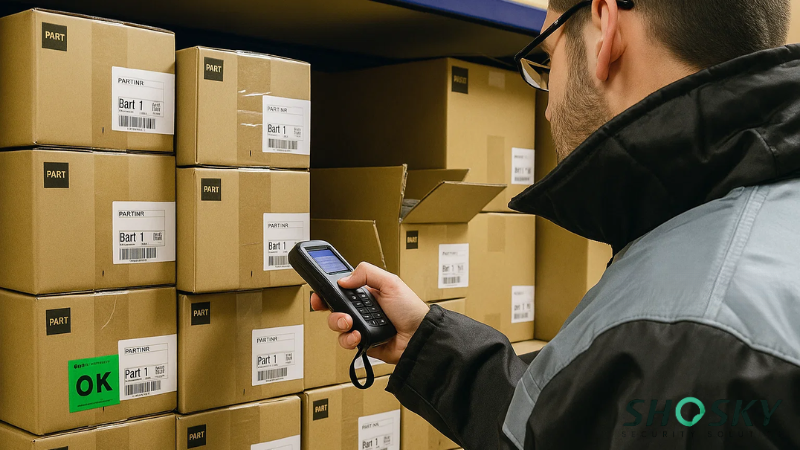
By logging every seal’s application and removal, companies can show exactly how their products were handled. They can also identify where unauthorized access happened. This is especially helpful in customs disputes and logistics investigations. It also supports claims tied to broken distribution agreements.
Detailed logs serve as proof of proper security practices. They strengthen due diligence efforts and show the company’s compliance with protocols. These logs are not just for internal tracking. They help demonstrate a clear effort to prevent unauthorized distribution to both partners and legal authorities.
For companies in regulated industries, this documentation is even more important. Courts and regulatory bodies often require strong, traceable records. A solid chain of custody backs legal claims and protects the company’s position. It also shows a serious approach to securing product integrity and protecting market boundaries.
7. Destructible Labels on Product Units
Destructible labels are a targeted tamper-evident tool. They’re designed to break apart when someone tries to remove them, making reuse impossible. This makes them a strong choice for high-value items like electronics, medical gear, and premium cosmetics where safety and authenticity matter.
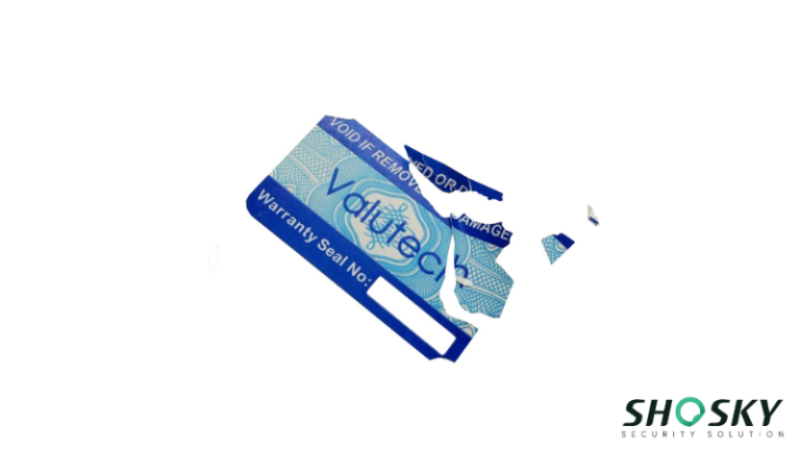
Once applied, the label can’t be peeled off and reused. It shatters or flakes apart, which stops people from placing it on another product. This helps block counterfeiters from using real labels on fake goods. It also keeps unauthorized resellers from repackaging items without detection.
These labels are especially useful for items that draw gray market attention. Their permanent damage factors affect the removal and help show if a product has been tampered with. That gives buyers and inspectors a quick visual check for authenticity and quality.
They also help companies meet safety and regulatory standards. When used correctly, destructible labels back up your quality control system. They support both legal compliance and brand trust, especially in markets where customer safety depends on genuine, untouched products.
8. Integrated Security Protocols with Trade Compliance Systems
Linking tamper-evident tools with enterprise resource planning (ERP), WMS, and compliance platforms creates a strong defense against gray market activity. These systems track product movement in real time. If a product gets scanned in the wrong region, it triggers alerts automatically. That helps companies meet foreign policy objectives and stop violations early.
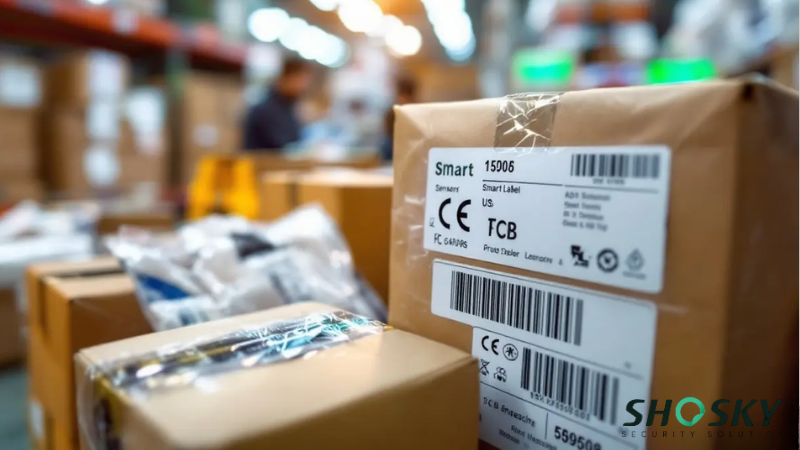
These platforms also help enforce ITAR, customs laws, and MAP agreements. Automated alerts reduce human error and apply rules evenly across all sales channels. Companies can set rules to flag products in restricted markets. When that happens, alerts go straight to compliance teams for fast action.
In complex global markets, staying compliant with different compliance programs is a challenge. Integrated systems help products stay in approved channels and follow compliance requirements. They also record every step of the product journey. That helps with audits and gives proof for enforcement if goods end up with restricted parties.
For companies working with dual-use goods or export-controlled tech, this setup is critical. Violating rules can bring serious legal repercussions and disrupt business operations. A strong, automated system reduces that risk. It keeps you in line with government agencies and protects your operations from avoidable penalties!
Tamper-Evident Strategies at a Glance
There’s no one-size-fits-all approach when it comes to tamper-evident security. The right tools depend on your product, industry, and threat level. Here’s a quick overview of the most common methods and where they fit in.
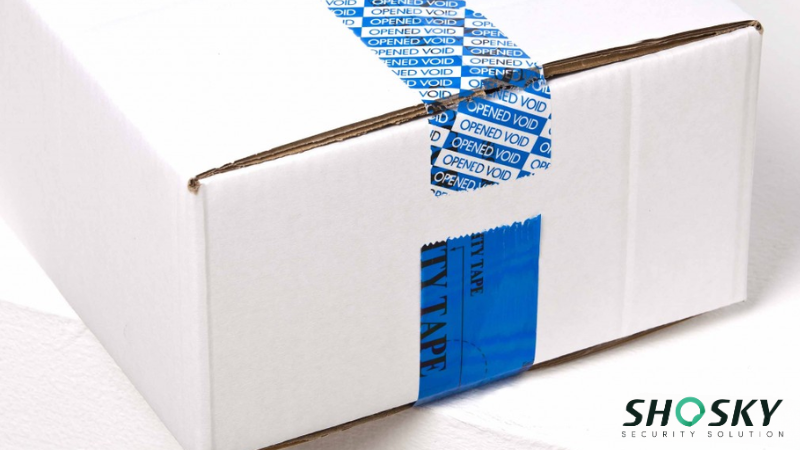
| Method | What It Does | Where It Helps | Why It Matters |
|---|---|---|---|
| Serial Numbers & Codes | Gives each item a unique ID | Tracks products through the supply chain | Helps trace leaks back to the source |
| Void Labels & Seals | Breaks or leaves marks when tampered with | Secures packaging and boxes | Proves tampering happened |
| Region-Coded Seals | Tied to a specific country or zone | Stops unauthorized cross-region sales | Flags contract violations |
| Tamper Tape | Can’t be removed cleanly | Used for shipping cartons | Shows signs of mishandling in transit |
| Smart Tags (NFC or QR) | Verifies product info digitally | Retail checks, customs inspections | Confirms authenticity fast |
| Seal Logs | Tracks who applied each seal and when | Internal checks, audits | Builds a record for compliance |
| Breakable Labels | Falls apart if removed | Stops label reuse or swapping | Protects brand reputation |
| System Integration | Connects seals to your tracking tools | ERP, WMS, supply chain software | Adds alerts, improves visibility |
Each option brings a different level of control and traceability. When layered properly, these tools don’t just deter tampering—they help you spot weak links, prove misuse, and stay compliant across markets.
How Different Industries Are Using These Tools in International Trade?
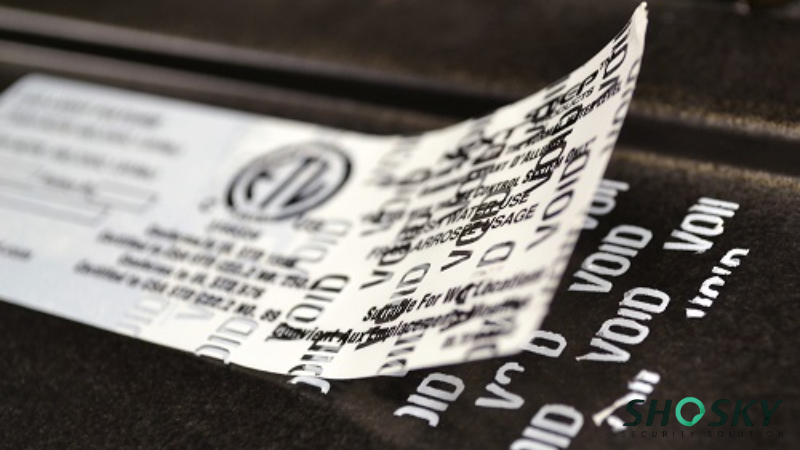
Across multiple sectors, companies are using tamper-evident packaging, smart labels, and tracking systems to solve real supply chain issues. These tools help stop unauthorized sales, trace product movement, and protect brand value at scale. Below are a few real-world examples of how different major industries are applying them in the real world:
- Consumer Electronics: Major brands like Sony, Samsung, and ASUS are adding serialized codes and tear-proof packaging to high-demand items. This blocks parallel imports and keeps region-specific products from leaking into unauthorized markets.
- Luxury Skincare: Brands like La Mer and Drunk Elephant use tamper-evident seals on shipments headed to select countries. It stops unauthorized resellers from opening, repackaging, and selling products online. Retailers also find it harder to move stock into off-limits regions.
- Pharmaceuticals: Exporters like Pfizer and Novartis rely on void labels and secure tapes on bulk cartons. These make tampering obvious and keep shipments compliant with import/export regulations. QR codes also help log scans during transit to prove a clean chain of custody.
From laptops to lipsticks and auto parts to champagne, different tamper technologies are no longer optional. They’re a growing part of the product strategy in commerce, helping brands maintain control long after goods leave the factory!
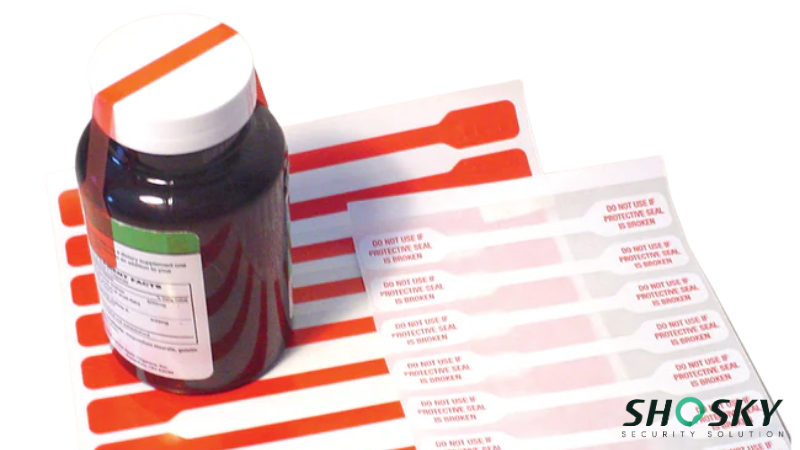
FAQs
What’s the difference between parallel imports and counterfeits?
Parallel imports are genuine products sold outside authorized channels. Counterfeits are fake products made to look like the real ones.
Are tamper-evident seals enough to prove unauthorized distribution?
Seals help show interference, but combined tracking and documentation make the case stronger.
Can these tools be integrated into our existing ERP or tracking systems?
Yes, most tamper-evident tools can connect with ERP and tracking platforms through APIs or custom modules.
Conclusion
Tamper-proof packaging, serialized tracking, and seal verification are no longer just extra layers—they’re essential tools for protecting your product and brand. As global trade gets more complex, these solutions help you stay one step ahead of leaks, counterfeits, and unauthorized resellers. The earlier you invest in these tools, the more control you keep over your market!
Protect Your Brand with Shosky Security’s Tamper-Evident Solutions
Shosky Security delivers trusted tamper-evident solutions that help you stop gray market diversion, protect distribution agreements, and meet global compliance requirements. So, ready to secure your global supply chain? Contact us today!

